|
Bulb log 40 --- 5th October 2005
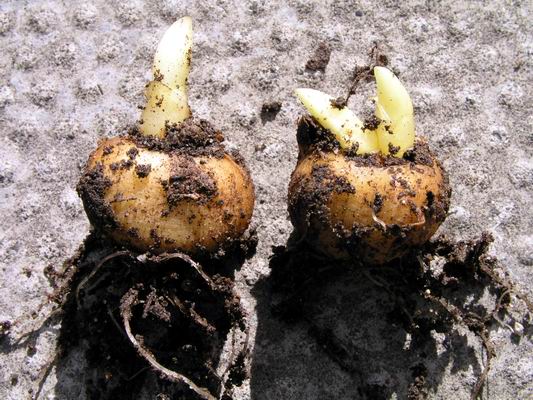
Corydalis solida
I had some Corydalis solida types, 'Beth Evans' in fact, that I had stored in damp compost, now they needed planting and this just lets you see the advanced stage of growth of many bulbs in the autumn. This early growth is to prepare them to make rapid growth in the spring more possible. This growth will continue very slowly though any milder periods of the winter months and this form will start to flower in February.
I cannot resist devoting the rest of this week's log to the bulbs of the moment: crocus.
Firstly an update to my ongoing search for the real identity of the white crocus pictured in last week's log, and repeated here, as C. pulchellus albus.
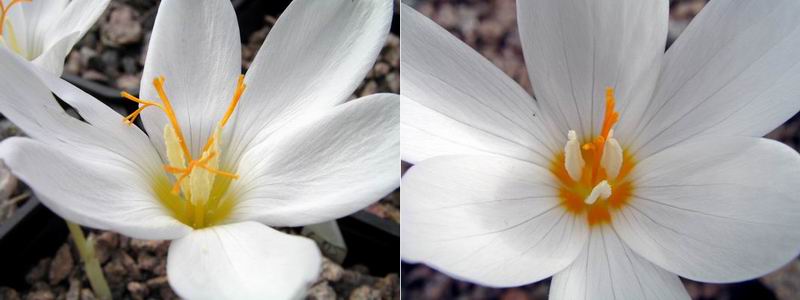
Crocus pulchelus albus x2
Thanks to Tony Goode we finally have the answer. The one on the left that I had as pulchellus albus is in fact a hybrid between pulchellus and speciosus and the one to the right is the real pulchellus albus - I can finally get the labels corrected.
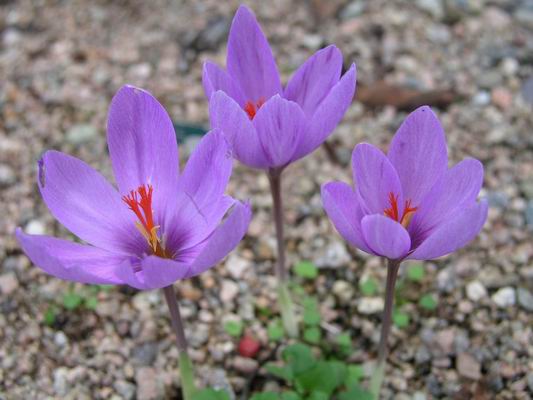
Crocus medius
I love the colour contrast between the petals and the style that is displayed on Crocus medius. The violet of the petals seems to exaggerate the red of the style.
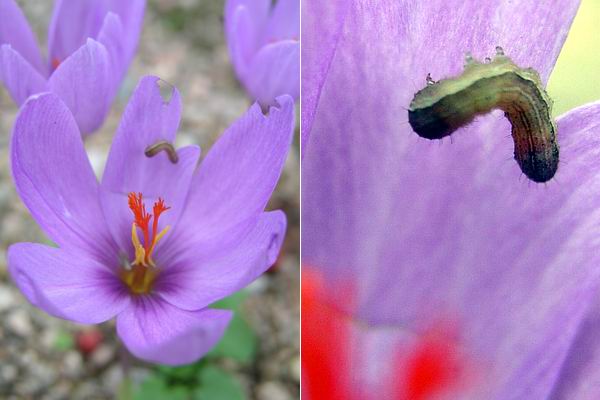
Caterpillar on crocus
While taking the pictures I noticed that one of the flowers was a wee bit chewed around the edges and then I spotted the culprit - a tiny caterpillar. I do not know if it was hoping to grow big on my crocus or if it would stay small. Alas I will never find out!
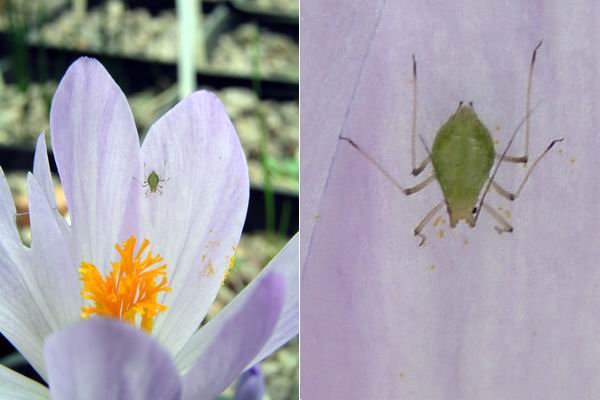
Crocus serotinus and aphid
It is amazing what you do find when you are looking in detail at the flowers: like this aphid, for instance. They are still around and will hatch out in mild spells, especially under glass, all through the winter and as bulbs offer greenery to suck the sap from, we need to be vigilant. It is best not to let them build up numbers and at this stage there is an easy biological control that can be used - the finger and thumb.
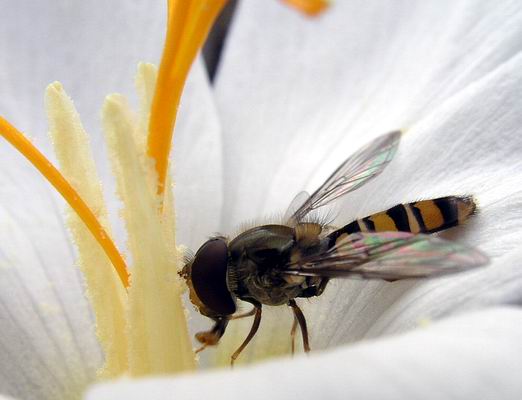
Hover fly pollinating crocus
Not all the insects are considered hostile or harmful, many are highly desirable like this hover fly feeding on the pollen and nectar and pollinating the flowers as it goes from one to another.
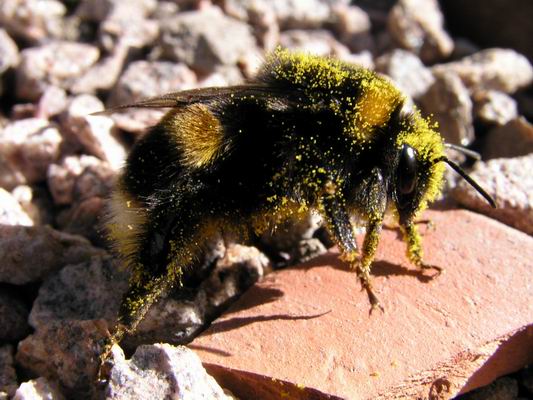
Pollen covered bee
Not quite so agile and impressive in its flying technique but just as effective as a pollinator is the bumblebee - this one was quite intoxicated from gorging just a wee bit too much. Not that as a Scotsman I can criticise it for that, as it has recently been pointed out to me that there are over twenty words in Scots that mean drunk and only one that means sober!!!
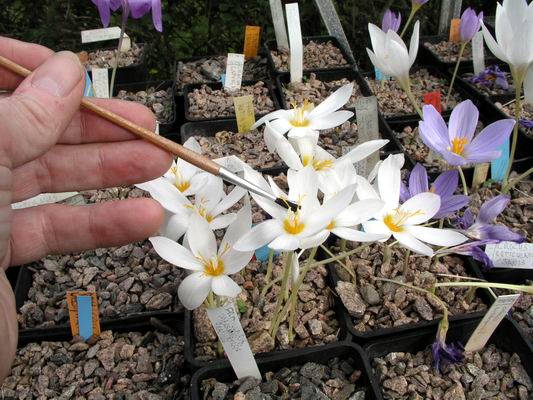
Pollinating crocus
I never leave it all up to the insects and I get out with my paint brush and join in the fun, buzzing around from flower to flower, transferring some pollen from the stamens to the stigma. If you find it difficult to collect pollen because it does not stick to the hairs of your brush just wet it very slightly and that will enable you to transfer pollen from flower to flower.
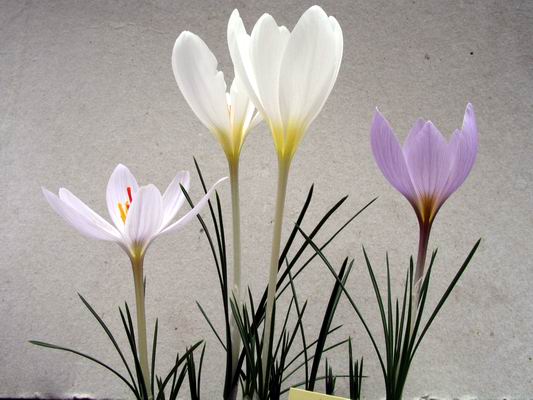
Crocus hadriaticus lilacinus
I never let up on telling you of the rewards you get when you raise your bulbs from seed and I know that many of you are converted but, if you have not grown a bulb from seed, crocus is a good place to start because they can flower in three years from sowing. This is a pot of Crocus hadriaticus lilacinus and it shows beautifully the variation you can get. I do not know if lilacinus is an official name within C. hadriaticus but I suspect that it would only have varietal status and would refer to the darker coloured form to the right.
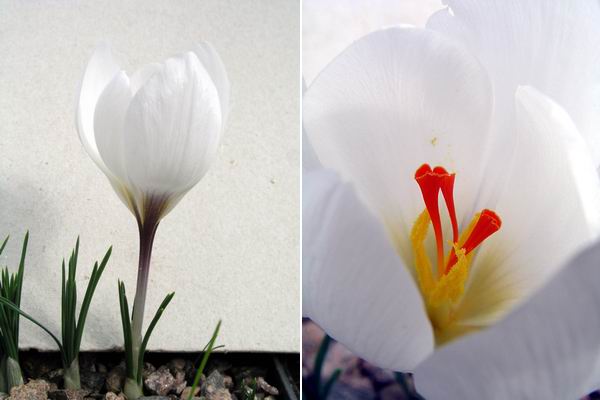
Crocus hadriaticus
This is the form that we grow as Crocus hadriaticus which we acquired as a corm and has been built up by offsets, so it is clonal.
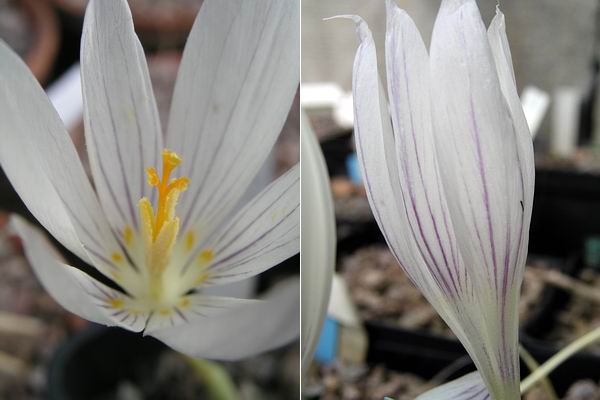
Crocus vallicola lilacinus
Crocus vallicola lilacinus is a selection that has strong lilac lines running up the inside of the petals, sometimes these are visible from the outside of the flower. The form on the right is a seedling which has very strong stripes on both the inside and outside of the flower. I also had one flowering last week that had pale lilac petals instead of the normal white plus the darker lines as above, but it got battered by the wind and rain before I could get a picture of it.
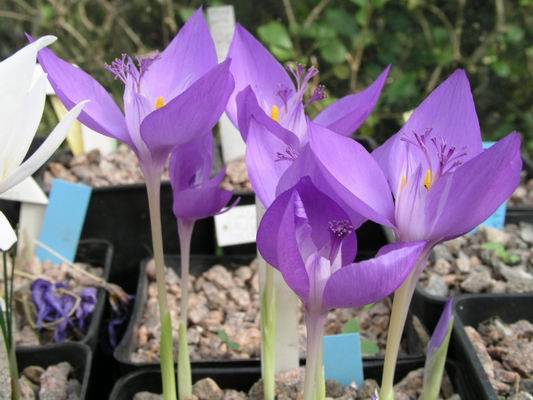
Crocus banaticus col Rumania
This pot of Crocus banaticus was raised from seed collected in Romania and they are fairly uniform to look at. They have a good deep colour and a very pleasing shape to the flower.
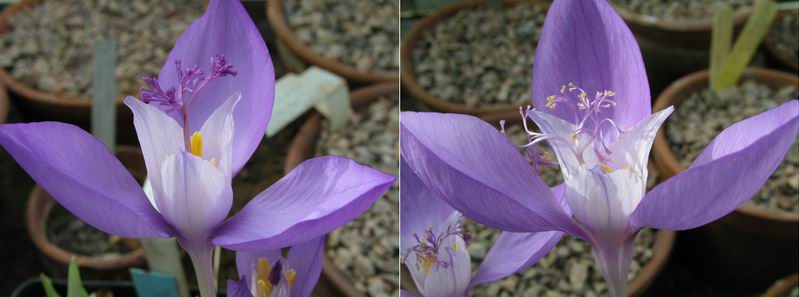
Crocus banaticus
Uniformity is not the case in the Crocus banaticus we raise from our own garden collected seed - there is a wide variation in size, shape and colour of the flowers which is not surprising as we have introductions from all areas of its distribution. When we have a special form that we want to multiply I make sure to cross pollinate it within its own pot and take care not introduce the pollen from the other forms - but then we come back to the bees and hoverflies who do not have the same view and just do their own thing.
^ back to the top ^
|

